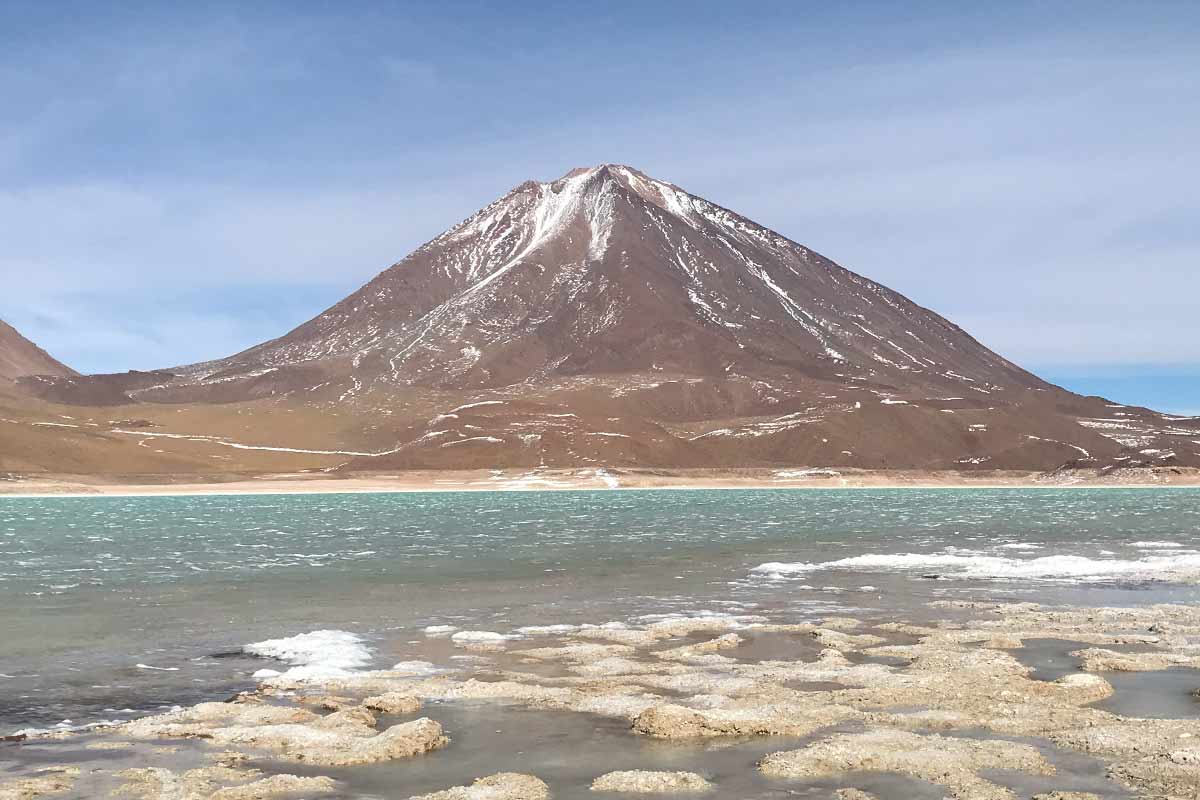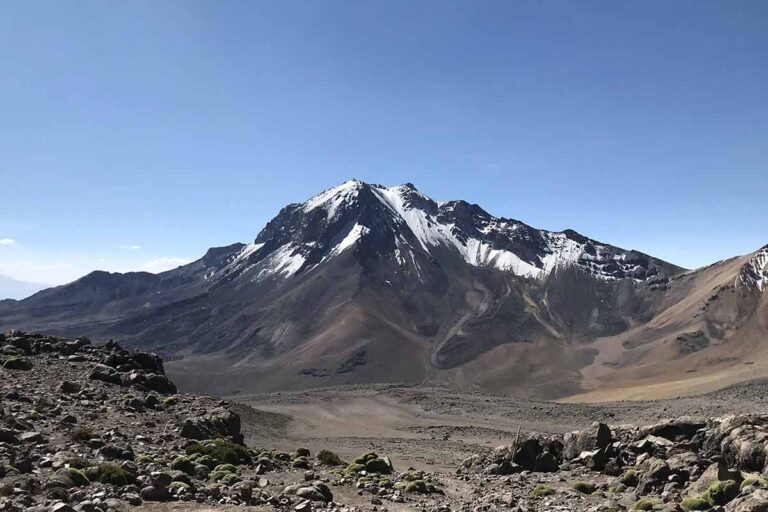Best time to visit Bolivia’s Salt Flats
When is the best time to visit Bolivia’s salt flats?
The Uyuni Salt Flats are one of those incredible sites that must be seen to really be believed.
Over 4000 square miles in area, you’ll see a sea of white in all directions further than the horizon, or even better a perfect mirror reflection (if visiting during the wet season).
There’s also many other incredible natural landscapes and phenomena to see in this region too!
In this guide we’ll explore the best time to visit Bolivia’s Salt Flats, which includes whether this region is worth visiting as well as how long we recommend spending here.
As well as looking at 5 of the very best things you can do in the Salt Flats, we’ll also answer your most burning questions in our FAQ section.
Best time to visit Bolivia’s Salt Flats
You can visit any time of the year to see the incredible region, although it’s important to note certain months have advantages over others.
Those who want to see the massive white mass will want to visit in either May, September or October when temperatures are not so nail-bitingly freezing.
If you want to see the perfect sky reflection, then you’ll want to visit between November and February.
Are the Uyuni Salt Flats worth visiting?
Quick Answer: Yes! An absolute must in any backpacking trip through Bolivia (or South America in general), the Uyuni Salt Flats offer a truly surreal landscape to travelers that make it down here.
During the dry season you can whizz around the Salt Flats in a 4×4, get those infamous forced perspective shots and even visit the cacti-ridden island of Incahuasi.
During the wet season, you’ll think you’re in heaven as the tiny layer of water on the flats will perfectly reflect the sky on the land in all directions.
It’s not just about the Salt Flats, though. On This 3 Day Tour you can also visit some other incredible landscapes. I (George) have done this which I highly recommend for those who love both crazy landscapes and wildlife.
The lagoons are a highlight, and here you’ll visit both a bright green and blood red lagoon, along with many Pink Flamingos resting on the shores which you can get up and close with.
You’ll also get to see the hot, steaming geysers of Sol de Mañana, with the early morning visit met with an incredible sunrise. Other highlights include towering extinct volcanoes, vast deserts and many curious animals along the way (such as Vicuña, Viscacha (Desert Rabbits) and Alpaca.
What is the best month to visit Bolivia’s Salt Flats?
Different months are ideal for different travelers – both for the weather and the experiences you’ll have.
Those who want to see the giant white flats will want to visit between May and October (the Dry Season). Rainfall is virtually nonexistent during these times, which makes access around the region easy.
Temperatures are coldest this time of year, and keep in mind that they can get really cold between June and July (averages of 37°F, highs of 66°F and nighttime lows of down to 26°F).
Despite feeling seemingly cold during the day, you’ll still need to apply sunscreen since it’s really easy to burn at these higher altitudes. The overall best month to visit during the dry season is October.
If you want to see the dramatic “heaven on earth” landscapes, then you’ll want to visit between November and April (the Wet Season). There will be some rainfall in the region which makes this phenomenon possible, with a maximum of 2 inches in any month.
It’s important to note that the heavier rains can make driving difficult and pose logistical issues.
The benefit of visiting during this time of year is that temperatures will be much warmer. Average daily temperatures range from 52-54°F, with highs of 69°F and lows of 36°F.
The overall best month to visit during the wet season is January (which is both the warmest and wettest – and also the best for seeing the otherworldly mirror phenomenon).
How many days do you need in Bolivia’s Salt Flats?
From our experience, we recommend travelers to spend around 2/3 days in the Uyuni Salt Flats. There’s multi-day tours for each option, and you’ll get to see many more incredible landscapes than if you just went on the usual day tour.
It’s important to note that you can’t drive around this region by yourself, and it’s mandatory to go with a tour. Not only are distances pretty big (you can take advantage by napping as a passenger), the terrains also require both a large 4×4 and expert driver to properly navigate.
If you’re adding the Salt Flats to a longer backpacking trip through Bolivia, then you can check out our Bolivia Itinerary for a better idea on how to plan a trip through this breathtaking country.
Got travel insurance for the Uyuni Salt Flats?
Top Things to do in Bolivia’s Salt Flats
Let’s now explore 5 of the very best things you can see and do when in the Uyuni Salt Flats (and surrounding region).
Get some incredible Salt Flat Photo Shots
The best thing about heading to the Uyuni Salt Flats is that regardless of when you’re visiting, you can take some truly incredible photos.
During the dry season you’ll have a massive blank white canvas to play with, which is perfect for a forced perspective shot (you can make objects or people much larger or smaller than other things in the shot).
When I (George) went, this meant a whole range of opportunities, and really the sky’s the limit. The car-chasing-down-people snap was a fun one to do, and you can also use other props to make your own fun experiments. The tour guides usually bring their own you can use, which is part of the package when heading on this Day Trip to the Salt Flats.
The wet season also brings its very own advantages too. Here you’ll be surrounded by a perfect reflection of the sky on the salt flats, which make for a really impressive mirror shot.
Whilst anytime of the day is great, the evening sky with its orange and red hues is something that you’ll never forget.
Visit various Stunning Lagoons
One of the main highlights of heading on a Multi-Day Uyuni Tour is the fact that you’ll head further into the remote region – which is where various colorful lagoons are waiting for you.
Hedionda Lagoon is the first you’ll visit, which is a sky-blue lagoon with an incredible backdrop of snow-capped peaks. The best thing of all is that crowds of Pink Flamingos strut around its shores, and you can get quite close too for a scenic wildlife shot.
Another you’ll visit is Laguna Colorada, which has a deep red hue and well… is memorable for that reason alone! Along the banks of the mirador you’ll also see many friendly Alpacas and Llamas which are perfect for that selfie shot.
Laguna Verde is the final of these three incredible lagoons, which has a bright green color. It’s located way south near the border with Chile, with the impressive 6000 ft Licancabur Volcano setting the backdrop.
Explore Incahuasi Island
This island has plenty of history, and also some memorable landscapes too. If visiting during the dry season then you’ll easily be able to reach this unorthodox island.
It’s filled corner-to-corner with rows of cacti, with some reaching as high as 40ft! It’s pretty small, and you can walk around the rocky paths within an hour.
However, given the once-in-a-lifetime photo opportunities, it’s worth taking your time to find all kinds of incredible angles (or just to sit on top of the mirador enjoying the views of these cacti with a solid white backdrop).
Even if you are visiting Uyuni during the wet season, you can still see it from a distance which is still pretty awesome.
It’s thought that Incahuasi was an ancient site that was once settled by the Inca, and here you can see some remains of what looks like a small town that was built on the top. If you want to see larger ancient ruins, then be sure to visit Tiwanaku which is close to La Paz.
Marvel at all kinds of Rocky Formations
Whilst it’s easy to only get your hopes up for the more extraordinary sites (like the Salt Flats and Colorful Lagoons), on the longer tours you’ll also get to see some pretty beautiful and bizarre rocky landscapes too.
The most famous of all is the Piedra de Árbol (Tree of Rock) which is located in the middle of a desert. The surrounding area also has many kinds of eccentric shapes that look like human faces, mushrooms and even animals too.
Another worthwhile visit is the Bosque de Piedra, which is actually the last destination you’ll visit on your way back to Uyuni.
Here you’ll literally be in a rock labyrinth, with all kinds of unorthodox shapes and towering formations to discover. Be sure to stay close to your guide since it can be easy to get lost here.
As well as these two, be sure to keep your eye out and ask your driver to stop if you see anything interesting. You can sometimes find wild animals too such as Viscacha and Vicuña hanging out in the shade of these rocks too.
Get up and close with the Fiery Geysers of Sol de Mañana
One of my personal highlights (George) has to be the Sol de Mañana Geysers.
Located much further south towards Chile, this area has high tectonic activity which has led to various bubbling pools and steam shots penetrating the rocky surface.
Whilst most travelers prefer visiting the more popular El Tatio Geysers near San Pedro de Atacama, this remote site is actually more impressive given it’s located closer to the volcanic heat source.
As a result temperatures can reach as high as 500°F (260°C), so you’ll need to be careful when walking the path and follow exactly where your local guide walks.
The most memorable part of a visit here is that, during the 3 Day Tour, you’ll head here around 4 or 5 in the morning. This means you’ll get to have an incredible sunrise in the background of these ever-burning geysers.
Salar de Uyuni FAQ’s
Best time to visit Bolivia’s Salt Flats
Thanks for reading this guide on the best time to visit Bolivia’s Salt Flats.
This epic destination is perfect for adventure seekers. Mostly known for its giant white mass, there’s also many other secrets to explore here.
From traversing its scorching deserts to chilling with Pink Flamingos on a red lagoon, you may even find the lesser-known gems to be more memorable than the Salt Flats themselves.
In this guide we’ve covered the best time to visit Bolivia’s Salt Flats, as well as our own personal recommendations for you to get the most out of a trip here. At the end we’ve also answered your most burning questions in our FAQ section.
Be sure to read our Bolivia Itinerary for more ideas on how to plan your trip in this impressive South American country.
👉🏽 P.S. If you’ve found this guide helpful, buy us a coffee here to say thanks! Or, support us by downloading our South America Travel Bible to get our best content.
“Dear traveler! Some links in this post contain affiliate links. Meaning, if you click through and make a purchase, book a hostel or sign up for a tour, we may earn a small commission at no additional cost to you. Your support means a lot and helps us to carry on traveling and maintaining the quality of this site for you.”
















